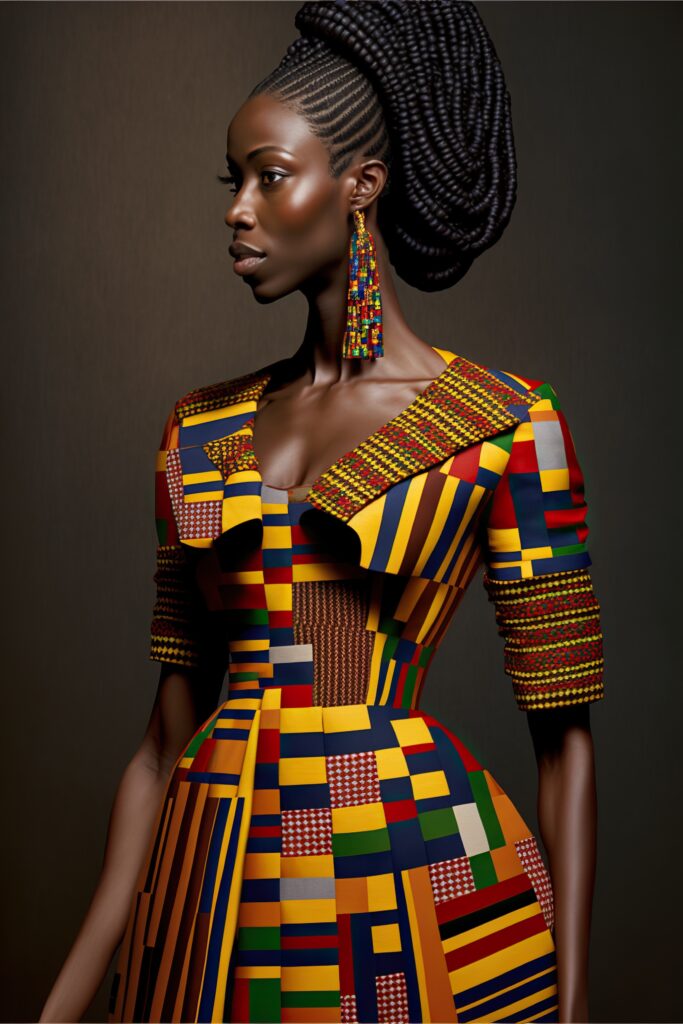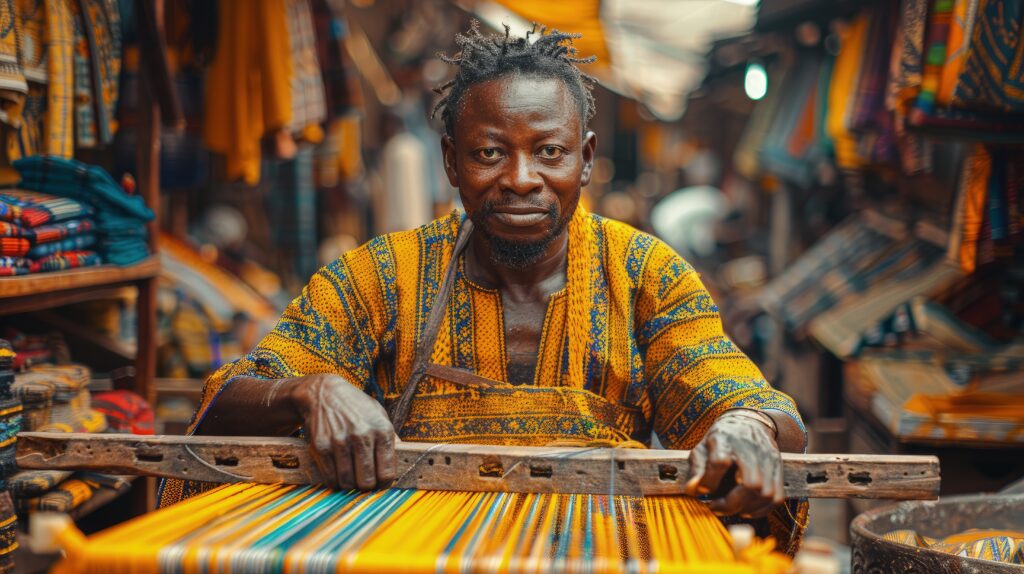A rich tradition of fabric
Ghana, a country rich in culture and history, boasts a vibrant textile industry that reflects its heritage and creativity. From traditional cloth weaving to contemporary fashion, textiles play a vital role in the cultural identity and economic development of the nation.
Historical Context
The history of textiles in Ghana can be traced back centuries, with the indigenous communities employing various techniques to produce beautiful fabrics. Traditional textiles like kente cloth, a handwoven masterpiece, are often made from silk and cotton, featuring intricate patterns and vibrant colors. Kente is not just a textile; it embodies stories, proverbs, and the history of the Ashanti people, making it a symbol of pride and cultural significance.
Here are some of the most notable fabrics:
1. Kente Cloth

- Perhaps the most famous Ghanaian textile, kente is a handwoven fabric made from silk and cotton.
- Each pattern and color has specific meanings, often conveying messages, proverbs, and historical significance. Traditionally associated with the Ashanti and Ewe people, kente is used in celebrations and ceremonies.
2. Adinkra Cloth
- Made from cotton, adinkra cloth is often dyed using natural pigments and features symbols representing concepts, values, and proverbs from Akan culture.
- Traditionally worn during funerals and important ceremonies, it carries deep cultural meanings through its designs.
3. Batakari (Fugu)
- A handwoven smock made from cotton, batakari is characterized by its loose fit and often features colorful patterns.
- Commonly worn by the people of the northern regions, it is both practical and cultural, often associated with traditional events.
4. Wax Prints
- Vibrant, colorful cotton fabrics with intricate patterns, often produced through a wax-resist dyeing technique.
- Popular across West Africa, these fabrics are used in everyday clothing, reflecting modern fashion trends while still honoring traditional aesthetics.
5. Nkyinkyim Cloth
- A textile featuring intricate, geometrical patterns, often made from cotton or a blend of fibers.
- Like kente, nkyinkyim designs have specific meanings and are used for special occasions.
6. Sika Wo Bɔkɔɔ
- A luxurious fabric often made with gold threads or high-quality cotton.
- Traditionally worn by royalty and during important ceremonies, it symbolizes wealth and status.
7. Ghanaian Denim
- Increasingly popular in contemporary fashion, this fabric is used for a range of clothing, from casual wear to formal attire.
- It reflects the globalization of fashion in Ghana, blending traditional styles with modern trends.
8. Batik
- A fabric dyed using a wax-resist method, similar to the technique used in Indonesia.
- Batik designs can be highly intricate, and the fabric is often used for casual and formal clothing.

A Vibrant Cultural Expression
Textiles in Ghana are more than just fabrics; they are a vibrant expression of culture, history, and identity. As the industry continues to evolve, blending traditional practices with modern innovation, it holds the potential to not only preserve the rich heritage of Ghana but also contribute significantly to the country’s economic development. By supporting local artisans and embracing homegrown products, Ghanaians and visitors alike can celebrate the beauty and significance of Ghanaian textiles.